But 46 extra crew certainly isn’t. Say it’s an extra $5m per year per vessel, with 12 ships and a 30 year life. That’s $1.5bn of additional cost for not much more capability.Steel is cheep and air is free and all that.
Royal Australian Navy Discussions and Updates 2.0
- Thread starter OPSSG
- Start date
The cost is in the systems not the hull, even the extra crew is related to systems not the physical size of the hull.But 46 extra crew certainly isn’t. Say it’s an extra $5m per year per vessel, with 12 ships and a 30 year life. That’s $1.5bn of additional cost for not much more capability.
If you are installing more comprehensive systems it costs comparitively little extra to upsize and improve the platform to get the best out of the installed systems.
The extra 46 crew would be to service the weapons and systems of the Bulgarian OPV 90.But 46 extra crew certainly isn’t. Say it’s an extra $5m per year per vessel, with 12 ships and a 30 year life. That’s $1.5bn of additional cost for not much more capability.
Desirable but not PC on DT.
That aside at 80 m if we want a true off shore vessel then that extra 10 m makes a bid difference.
Crew size increase for the OPV role would be negligible
We need a constabulary vessel that can go a great distance off the coast and park there for a decent length of time.
I think we may of short changed ourselves with what we are building.
Also extra size provides greater flexibility for accommodation load out and logistic space.
The unmanned space on , under and over the water will grow dramatically and the OPV's are well place to embrace this future.
Unlike the patrol boat generations Army will also embrace the potential of the Arafura Class .
With three decent sized ships boats and accommodation and logistic spaces, these ships will take on many roles not currently the domain of the patrol boats.
With that recognition, why not go a step further now and make them even more capable asap.
As to the 1.5bn, I'd happily pay that and more if it doubles our fleet units that can carry and house a helicopter before the first of the Hunter Class enter service.
40 x UAV's
36 x Seahawks
Armys Aviation assets.
Fore a bit extra we in fact get a lot more capability for relatively little expense.
Cheers S
Yeah I get that. But the OPVs are what they are at this point and there doesn’t seem to be much that could be done to actually increase their potential in the short term.The extra 46 crew would be to service the weapons and systems of the Bulgarian OPV 90.
Desirable but not PC on DT.
That aside at 80 m if we want a true off shore vessel then that extra 10 m makes a bid difference.
Crew size increase for the OPV role would be negligible
We need a constabulary vessel that can go a great distance off the coast and park there for a decent length of time.
I think we may of short changed ourselves with what we are building.
Also extra size provides greater flexibility for accommodation load out and logistic space.
The unmanned space on , under and over the water will grow dramatically and the OPV's are well place to embrace this future.
Unlike the patrol boat generations Army will also embrace the potential of the Arafura Class .
With three decent sized ships boats and accommodation and logistic spaces, these ships will take on many roles not currently the domain of the patrol boats.
With that recognition, why not go a step further now and make them even more capable asap.
As to the 1.5bn, I'd happily pay that and more if it doubles our fleet units that can carry and house a helicopter before the first of the Hunter Class enter service.
40 x UAV's
36 x Seahawks
Armys Aviation assets.
Fore a bit extra we in fact get a lot more capability for relatively little expense.
Cheers S
I really think we’re best placed accelerating the Hunter builds as much as possible, and accept this means we will have a larger fleet in the long run (which I think we need anyway).
(groan). You need vertical launch tubes to do land attack? Really? I wonder how the Brits manage it then…. With that kind of egregious error early on it makes one wonder about the whole article.Part 1 of Peter Hartcher's (SMH) piece on the AUKUS deal, some interesting background on how the SSN deal came about :
Radioactive: Inside the top-secret AUKUS subs deal
Redlands18
Well-Known Member
He is going to look pretty stupid if Australia goes with the Astute. Has Australia been begging the Yanks for Nuclear propulsion for the last 40 years?(groan). You need vertical launch tubes to do land attack? Really? I wonder how the Brits manage it then…. With that kind of egregious error early on it makes one wonder about the whole article.
All we really know about the proposed MCM and hydro vessels at this stage is that they will be based on the OPV 80 hull. The OPV 90 and OPV 85 are both based on the OPV 80 hull so I don’t think an upsized version of the Arafura for these roles is entirely out of the question.The extra 46 crew would be to service the weapons and systems of the Bulgarian OPV 90.
Desirable but not PC on DT.
That aside at 80 m if we want a true off shore vessel then that extra 10 m makes a bid difference.
Crew size increase for the OPV role would be negligible
We need a constabulary vessel that can go a great distance off the coast and park there for a decent length of time.
I think we may of short changed ourselves with what we are building.
Also extra size provides greater flexibility for accommodation load out and logistic space.
The unmanned space on , under and over the water will grow dramatically and the OPV's are well place to embrace this future.
Unlike the patrol boat generations Army will also embrace the potential of the Arafura Class .
With three decent sized ships boats and accommodation and logistic spaces, these ships will take on many roles not currently the domain of the patrol boats.
With that recognition, why not go a step further now and make them even more capable asap.
As to the 1.5bn, I'd happily pay that and more if it doubles our fleet units that can carry and house a helicopter before the first of the Hunter Class enter service.
40 x UAV's
36 x Seahawks
Armys Aviation assets.
Fore a bit extra we in fact get a lot more capability for relatively little expense.
Cheers S
If anything I would suggest that even a stretched version of the OPV 80 might be too small for the role of Hydrographic vessel.

Future Hydrographic vessel designs sought by Defence - Australian Defence Magazine
This vessel will replace and expand the RAN’s existing hydrographic survey capabilities.
 www.australiandefence.com.au
www.australiandefence.com.au
Redlands18
Well-Known Member

AUKUS fallout: double-dealing and deception came at a diplomatic cost
Scott Morrison’s efforts by stealth to secure the AUKUS deal had global ramifications, with the French president enraged and the US president blindsided.
Last edited:
John Newman
The Bunker Group
Why?All we really know about the proposed MCM and hydro vessels at this stage is that they will be based on the OPV 80 hull. The OPV 90 and OPV 85 are both based on the OPV 80 hull so I don’t think an upsized version of the Arafura for these roles is entirely out of the question.
If anything I would suggest that even a stretched version of the OPV 80 might be too small for the role of Hydrographic vessel.

Future Hydrographic vessel designs sought by Defence - Australian Defence Magazine
This vessel will replace and expand the RAN’s existing hydrographic survey capabilities.www.australiandefence.com.au
The current hydro ships are 71.2m long, the Arafura class OPV are 80m long, in other words, the OPVs are 8.8m longer than the ships they will replace (the mine warfare ships are considerably shorter again).
Just because there are longer sister versions of the current OPV 80 design, why does that make it necessary for the RAN to go with a longer design? Why?
Below are some images of the current hydro ship design and the Arafura ship design.
The OPVs have a large flight deck, can launch UAVs, two container lifts servicing the mission deck below, two cranes for launching the RHIBs and also being able to turn/face aft and launch UUV or USV over the side, and let’s not forget the stern ramp that can launch UUV or USV craft.
Again, why does the replacement Hydro ships need to be larger than 80m? Why?
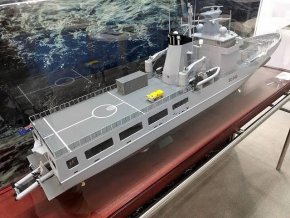
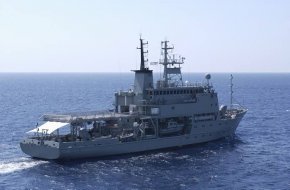
Todjaeger
Potstirrer
The first thought which occurred to me was more of a question, namely what systems are required to properly perform the hydro and/or MCM roles, and what space and displacement would they require?Why?
The current hydro ships are 71.2m long, the Arafura class OPV are 80m long, in other words, the OPVs are 8.8m longer than the ships they will replace (the mine warfare ships are considerably shorter again).
Just because there are longer sister versions of the current OPV 80 design, why does that make it necessary for the RAN to go with a longer design? Why?
Below are some images of the current hydro ship design and the Arafura ship design.
The OPVs have a large flight deck, can launch UAVs, two container lifts servicing the mission deck below, two cranes for launching the RHIBs and also being able to turn/face aft and launch UUV or USV over the side, and let’s not forget the stern ramp that can launch UUV or USV craft.
Again, why does the replacement Hydro ships need to be larger than 80m? Why?
On a related note, there might be an opportunity to include 'extra' capabilities relevant to the respective roles by adding certain features to the design used. A hangar to support helicopter ops beyond just having a helipad comes to mind. IIRC there are (or at least have been) heli-bourne LIDAR systems used/supported by the then Tenix Defence for some shallow water hydrographic surveying. Also the USN has used helicopters to conduct some of their minesweeping with IIRC magnetic influence sweeps towed by CH-53's.
One thing which we do not know is how much 'free' space and weight/displacement is available in the base Arafura-class OPV hull design and whether or not the internal layout would or even could be the same/similar between the OPV design and the hydro/MCM designs. If the internals of the design need to be reworked, especially if significant machinery needs to be changed or relocated, then sticking too closely to the OPV hull design might not be worthwhile.
IMO consideration also needs to be given for how the future hydro and MCM vessels will carry out their respective roles in what I understand to be a slightly different fashion than is currently done using the existing specialist vessels. How the Huon-class MHC was specifically designed and built for MCM work enabled the vessel to approach a potential minefield much more closely than would likely be possible using a more conventional steel hull, as well as proving greater vessel survivability in the event of a nearby mine detonation. As I understand it, the future MCM vessels are to make greater utilization of ROV's to clear/neutralize mines whilst operating at safe distances from the supporting MCM 'mothership' but that then raises the question of what & how a suspected minefield would be detected and mapped.
It isn't just about the length. The Leeuwin class has 500 tons greater displacement. Just looking at the two designs side by side it is clear that the Leeuwin has more usable office space.Why?
The current hydro ships are 71.2m long, the Arafura class OPV are 80m long, in other words, the OPVs are 8.8m longer than the ships they will replace (the mine warfare ships are considerably shorter again).
Just because there are longer sister versions of the current OPV 80 design, why does that make it necessary for the RAN to go with a longer design? Why?
Below are some images of the current hydro ship design and the Arafura ship design.
The OPVs have a large flight deck, can launch UAVs, two container lifts servicing the mission deck below, two cranes for launching the RHIBs and also being able to turn/face aft and launch UUV or USV over the side, and let’s not forget the stern ramp that can launch UUV or USV craft.
Again, why does the replacement Hydro ships need to be larger than 80m? Why?
View attachment 49289View attachment 49290
It also isn't just the ability to operate and carry equipment. For example Leeuwin has a range of 33,000 kms. That is more than 4 times that of the Arafura. They are two vessels with two different jobs.
As many have already said the Arafura isn't a front line warship. It isn't a hydro vessel either. It will probably do the job but I am sceptical that it would be as effective as a specialised vessel.
A lot of the modern hydrographic gear has been miniaturised now compared to what it was say 20 or 30 years ago, so it's not going to take up so much space aboard ship. The onsite processing of the collected data could be done on a high spec laptop with plenty of processing power. Equipment such as multibeam echo-sounders and side scan sonars etc., are physically smaller but have better power and resolution; and the ships inertia and movement sensors* are more sensitive, accurately synchronised with the sonar, and the highly accurate ships position, in three dimensions, on the earth's surface. That's just one part of it; there is also the beach profile work which is done from a RHIB or small boat, fixing on the chart and marking of hazards etc. In todays world a big ship is no longer needed, so an 80 or 90m vessel is quite capable. The RNZN OPV, HMNZS Wellington, is the RNZN hydrographic ship because it has the Manawanui III's multibeam echo-sounder as well as its inertia and movement sensors fitted. It did the checking and resurveying of the harbour at Tongatapu after the recent catastrophic Tongan volcanic eruption.It isn't just about the length. The Leeuwin class has 500 tons greater displacement. Just looking at the two designs side by side it is clear that the Leeuwin has more usable office space.
It also isn't just the ability to operate and carry equipment. For example Leeuwin has a range of 33,000 kms. That is more than 4 times that of the Arafura. They are two vessels with two different jobs.
As many have already said the Arafura isn't a front line warship. It isn't a hydro vessel either. It will probably do the job but I am sceptical that it would be as effective as a specialised vessel.
*Detect and measure precisely ship's pitch, heave and roll (can't remember correct name for them).
Video from Naval News on day three of Indo Pacific 2022 covering:
- Rheinmetall's Millenium CIWS
- Rheinmetall's MASS Decoy launching system
- Rheinmetall's Murena and Asteria Naval mines
- LRASM both air and Mk41 launched
- ECA Groups SEA1905 MCM proposal
- L3Harris Undersea surveillance network for SEA5012 Integrated Undersea Surveillance System
Doesnt seem to be much new there, mostly high-level though the L3Harris breakdown is interesting.
ABDR article on ex-HMAS Maitland finding a new life as an autonomous test bed vessel :
Former RAN Armidale class patrol boat to become autonomous testbed
Former RAN Armidale class patrol boat to become autonomous testbed
Slightly off topic but if the RAN end up with Virginia subs the attached links gives an interesting explanation (layman level) on how they are constructed starting with the hull bending and then the primary fit out and welding done with the hull section standing on its end. Internal frame structure which reinforces the hulls gets manufactured outside the hull and is then roughed in and then fitted into the section.
if you have apple news sub you can read the article here An exclusive look inside the place nuclear subs are born — Popular Science or at popular science.
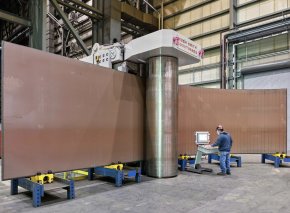
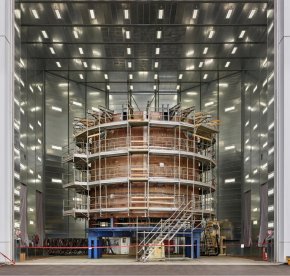
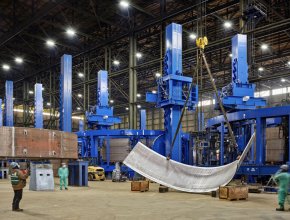
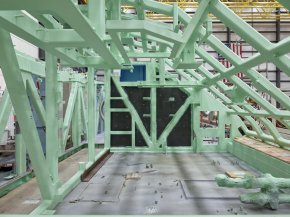
if you have apple news sub you can read the article here An exclusive look inside the place nuclear subs are born — Popular Science or at popular science.




Thanks for posting.
It's interesting that they construct and outfit the sections vertically. This is for two reasons, when a large steel structure is constructed over many months or a couple of years, the earths magnetic field induces a magnetic set on the structure, by fabricating the sections at 90 degrees this removes that set.
The other factor is it permits the use of overhead cranes to lower equipment into place, significantly speeding up and simplifying the construction process.
It's interesting that they construct and outfit the sections vertically. This is for two reasons, when a large steel structure is constructed over many months or a couple of years, the earths magnetic field induces a magnetic set on the structure, by fabricating the sections at 90 degrees this removes that set.
The other factor is it permits the use of overhead cranes to lower equipment into place, significantly speeding up and simplifying the construction process.
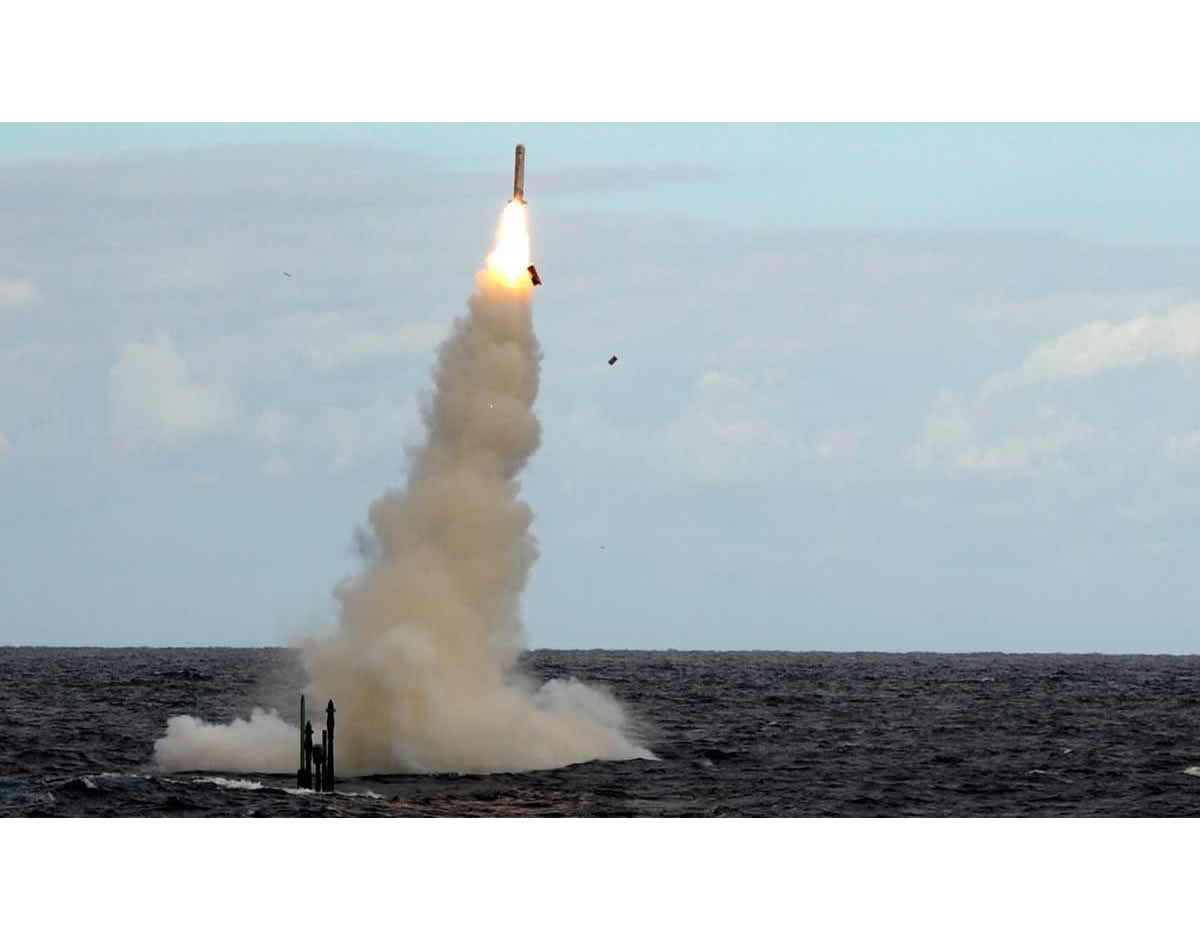
Australia to Upgrade Collins Submarines with Tomahawk Missiles - Naval News
Australia is looking at outfitting its in-service Collins-class submarines with Tomahawk land attack cruise missiles as part of their forthcoming Life of Type Extension (LOTE).
Per above, RAN is actively investigating including Tomahawk LACM onto the Collins Class during LOTE…
I imagine physical engineering upgrades, combat system, comms and sensor systems at a minimum would be required for this?
Perhaps 8-12 weapons per boat, at best I would guess?
the road runner
Active Member
Kongsberg NSM news for the RAN
The Bushmaster mated with 2 NSM named "Strike Master" has a similar Command and control console to the Land 19 NASAM ground base air defense system command and control console..This console is produced in South Australia. Some great information on NSM and NASAM system
Kongsberg at Indo Pacific 2022: NSM for Royal Australian Navy - YouTube
The Bushmaster mated with 2 NSM named "Strike Master" has a similar Command and control console to the Land 19 NASAM ground base air defense system command and control console..This console is produced in South Australia. Some great information on NSM and NASAM system
Kongsberg at Indo Pacific 2022: NSM for Royal Australian Navy - YouTube
Last edited:
To be honest, I’m not entirely sure Army will be that interested in this… They will get better effects and longer range from the ASM variant of PrSM we have already signed up to and with ADF apparently going all in on Tomahawk and RAN on SM-6, it seems a no brainer to me that Army look at Typhon MRC instead…Kongsberg NSM news for the RAN
The Bushmaster mated with 2 NSM named "Strike Master" has a similar Command and control console to the Land 19 NASAM ground base air defense system command and control console..This console is produced in South Australia. Some great information on NSM and NASAM system
Kongsberg at Indo Pacific 2022: NSM for Royal Australian Navy - YouTube
Army wasn’t even that interested in the Bushmaster ute, back in the day either, for that matter…
Won’t it come down to the unit cost, capability vs modern air defences and mobility (weight) of each?To be honest, I’m not entirely sure Army will be that interested in this… They will get better effects and longer range from the ASM variant of PrSM we have already signed up to and with ADF apparently going all in on Tomahawk and RAN on SM-6, it seems a no brainer to me that Army look at Typhon MRC instead…
Army wasn’t even that interested in the Bushmaster ute, back in the day either, for that matter…
These are my guesses at the relative (emphasis relative before anyone bites my head off) ratings of each:
Tomahawk - low cost but low capability (although big warhead), low mobility
SM-6 - high cost, high capability (although small warhead), medium mobility
NSM - low cost, high capability (moderate warhead), high mobility
PrSM - ? Cost, high capability, ? Mobility.
So if you wanted something relatively cheap but capable to disperse around islands on a small hard to find platform this might be a good idea.
